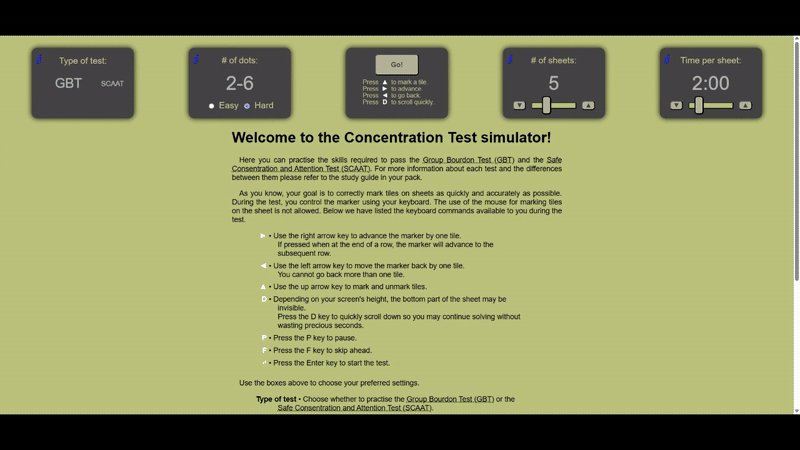Master the Group Bourdon Test with confidence
Dominate the concentration test with a tailored platform that enhances your skills, showcasing your ability to concentrate, speed, and accuracy.Learn more and prepare with JobTestPrep.
The Group Bourdon PrepPack includes:
- Coverage for Group Bourdon concentration Tests - tailored platform that mirrors the actual assessment.
- Detailed guide - including strategies and tips to enhance your your score and showcase your fit.
- Bourdon-style tests
- Full answers and score reports
- Study guide
Take a Sneak Peak into Our GBT Concentration Test

Who Are We?
At JobTestPrep, we’ve helped thousands of candidates pass competitive hiring assessments,
including those at McKinsey and other top consulting firms. Our materials are designed by
psychometric experts and updated based on real candidate feedback to reflect the latest game formats.
Founded in 1992 by David Meshulam, JobTestPrep has become a trusted leader in online test preparation. With 30+ years of experience, 220+ courses, and over a million success stories, we combine expert-crafted PrepPacks with AI tools like our CV Analyzer and Interview Prep platform to help candidates worldwide prepare with confidence.
FAQ's
You will have instant access to your PrepPack, which includes all your practice tests. You can start practicing immediately, learning from detailed explanations and guides, while tracking your performance with accurate, tailored questions to help you understand the correct approach to solving your assessment.
After your purchase, you will receive two emails. The first will contain your payment receipt, and the second will include a login link along with information about our general terms, conditions, and refund policy. To access your PrepPack, simply log in and reset your password.
No, there is no limit. Your progress is saved in your account, allowing you to revisit previous attempts. Our performance tracker helps you focus on the test sections that require more attention.
Yes, you can extend your practice period. Simply contact our customer success team via c.serv@jobtestprep.com.




